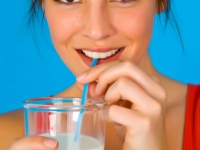When working out, we lose fluids not only through sweat, but also through vapor. When trainings are especially long and intensive, loss of fluids is also intense and can lead to dehydration.
Dehydration can lead to weakness and lowering of physical capabilities. Water is the source of nutrients, a cleansing element in cells.
The human body is composed of about 60 – 65 % water, a human can survive only a few days without water, that’s how important it is. About 75 % of energy utilized by our bodies is used to keep their heat levels. When muscle work is done, heat is produced. The body temperature raises. In order to prevent overheating, the heat needs to be dispersed to keep the temperature at safe levels of 37 – 38 °C. Great raises in temperature can lead to heat stroke. The main method of heat dispersal during a workout is sweating. Water is being released from the body by means of capillaries, which transport the heat surplus outside the body. Every liter of sweat vaporized from our bodies means burning about 600 kilocalories.
Temperature and humidity also have a lot of impact on fluid loss, as do body mass and height. During one hour of workout, an average person can lose about 1 liter of water. Dehydration lowers stamina. Along with dropping levels of fluids, blood quantity drops too, which makes the work harder for the heart, lungs and the whole circulatory system. The heart has to work much faster. Overstraining some systems leads to loss of stamina.
Losing even 2% of weight influences the workout negatively, and maximum oxygen capability drops by about 10 – 20 % (and so does your sports capability). If you lose 4%, you may experience dizziness, nausea and diarrhea. With 5 %, your oxygen capability will drop by 30 %, with 8% you will have dizziness, trouble breathing, disorientation. Is there a way to prevent fluid loss? There isn’t – it’s the body’s natural way of dispersing heat. All we can do is replenish fluids. It’s best to hydrate before a workout, during it and afterwards.
We lose about 3 – 6 % of water per average day, so every 20 days the whole quantity of water inside the body is exchanged. Sportspeople undergo this process at a speedier rate, even every 6 days. Along with sweat, important minerals are evacuated, mainly Mg, Na, K, Mg and Ca and vitamins. The quantity of electrolytes evacuated with sweat is due to: the level of fitness, rate of sweating, type of activation of sweat glands (active – workout, passive – sauna). When we start working out, we lose fluids, that’s why it’s important to hydrate all the time. It’s recommended to drink about 150 – 350 ml every 15 – 20 minutes. The more we sweat, the more we should drink. However, thirst is not the best indicator of hydration levels. Tests have shown that to maintain optimum stamina it’s enough to replenish 80% of lost fluids. It’s best to consume chilled drinks (15-22 °C), with plenty of them available at hand during training.
Electrolytes included in sports drinks help keep balance in various body parts. They regulate the water circulation between the cellular membrane and the environment. Sodium concentration around the outside of the cell makes water enter inside them. When sodium levels drop – water goes outside the cell. Potassium draws water in, sodium has important characteristics – enhances taste and thirst. Adding a little sodium to sports drinks increases fluid intake.
Maciej Sośnicki

